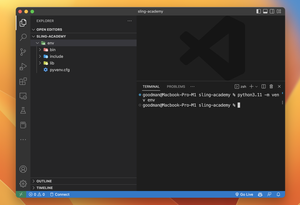The SSLError: SSL module not available issue in Python signals that the SSL module required for HTTPS requests is missing or not properly configured. This problem might arise due to various reasons such as improper installation of Python, issues with the environment or system’s libraries, or outdated packages. Here are some common solutions to fix this error:
Reinstall Python with SSL Support
If Python was installed without the necessary SSL modules, reinstalling Python with proper SSL support may solve the problem. This error frequently occurs on custom Python builds which exclude SSL modules.
Steps to Implement:
- Download the latest Python installer from the official Python website.
- Run the installer and make sure to select the option to install SSL module support during the installation process.
- After installation, restart your system.
Advantages: Reinstalling Python might ensure all necessary SSL modules are correctly configured.
Limitations: This process might be time-consuming and could require reinstallation of previously installed packages.
This approach (and the others) involves system check-ups and installations rather than code fixes.
Update OpenSSL Library
The OpenSSL library is a critical component for SSL support. If it’s outdated or misconfigured, updating or reinstalling it might resolve the error.
Steps to Implement:
- Identify your current OpenSSL version by running
openssl versionin the command line. - If an update is available, download and install the update from the OpenSSL project’s website or the package manager for your system.
Advantages: This ensures that Python’s SSL module interoperates correctly with the underlying SSL library.
Limitations: Updating system libraries may lead to compatibility issues with other applications that depend on OpenSSL.
Install or Update the Python requests module
Updating the Python requests library and its dependencies can sometimes resolve SSL issues as updates may include fixes for SSL errors.
Steps to Implement:
- Open your command-line interface.
- Run
pip install -U requeststo update therequestslibrary to the latest version.
Advantages: Ensures you have the latest version with potential SSL error fixes included.
Limitations: If the problem is not with the requests module, this step might not resolve the issue.
Check Environmental Variables
Incorrect environmental variables can cause Python to be unable to locate the SSL module. Ensuring these are properly set can sometimes fix the error.
Steps to Implement:
- Check the
LD_LIBRARY_PATHvariable on Linux orDYLD_LIBRARY_PATHon macOS to make sure OpenSSL library paths are included. - If not included, modify the environmental variable to include the path to the OpenSSL libraries and restart your terminal session.
Advantages: Can quickly fix SSL errors if the only issue was with environmental configuration.
Limitations: Environmental issues are system-specific, so this may not apply to all setups.











